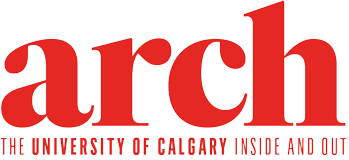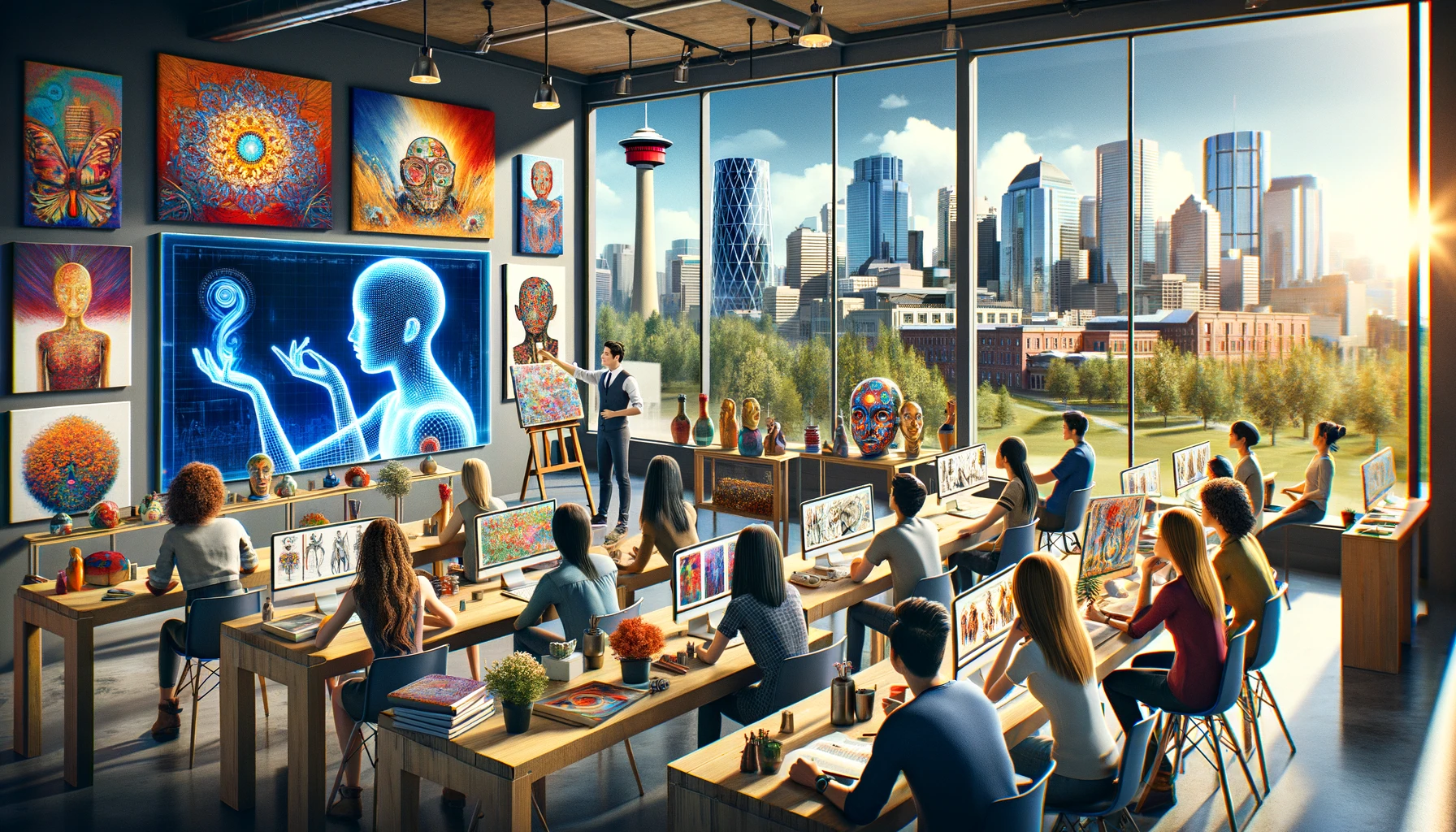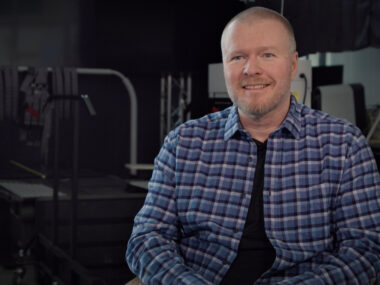Written by Jacquie Moore, BA ’97
Lately, it seems that every day comes with a new concern about the increasingly powerful reach of artificial intelligence (AI) into our lives. AI has already transformed every major global industry including manufacturing, health care, education, transportation and customer service.
While this new reality is widely seen as beneficial and exciting when it comes to, say, expediting vaccine development or helping save the bees, AI’s growing impact on visual, literary and performing arts has incited more than a little apprehension. Heated debate around artistic integrity, originality and authenticity in the AI realm has artists, and art-lovers, on edge.
Indeed, if AI can write interesting books and generate award-winning art, won’t human creativity wither and die? To Dr. Patrick Finn, MFA’09, PhD, an associate professor in the Faculty of Arts’ School of Creative and Performing Arts, the answer is no — not only that, he believes that, if we approach AI with boldness and positivity, it can serve as a tool to fuel our imaginations and even increase creative output.
Change is hard
The Greek philosopher Socrates said that writing was a very bad idea because, by putting words on paper, memory would no longer be a necessary human function. Writing, he said, “will create forgetfulness in the learners’ souls, because they will not use their memories; they will trust to the external written characters and not remember of themselves.”
While that might seem absurd now, Finn says, “there’s always societal anxiety when our sense-making apparatus changes.” He points to the mass panic upon the advent of the printing press when “books were called witchcraft.” And now, he says, with current AI-driven technology, “we’re in the final stage of shifting from a world of book-based knowledge to a computer-based one.”
In discussion with his students about perspectives on AI and the potential decline of human creativity, Finn says he often tells them to remember two words: “bicycle face.” A fake medical condition invented in the late 19th century to keep women from pursuing independence, rumours spread that bike-riding would cause unseemly wrinkles, dark circles and a permanently fatigued look to the face.
“Every time our culture has a terror of technological change, we’ve been wrong,” says Finn. “And, every year I’ve been alive, someone has said the world is coming to an end. It hasn’t.” Sure, change is difficult but, he says, “I think the greatest challenge we face right now is that we have to amplify our dreams.”
Finn sees AI as a means to greater human creativity — not less.
Look your chatbot in the eye
In late 2022, AI use hit the mainstream when the latest version of the language-chatbot ChatGPT came in. “It wasn’t new technology, but the new interface suddenly made it easy for anyone to use,” says Finn. “That moment was a tipping point.”
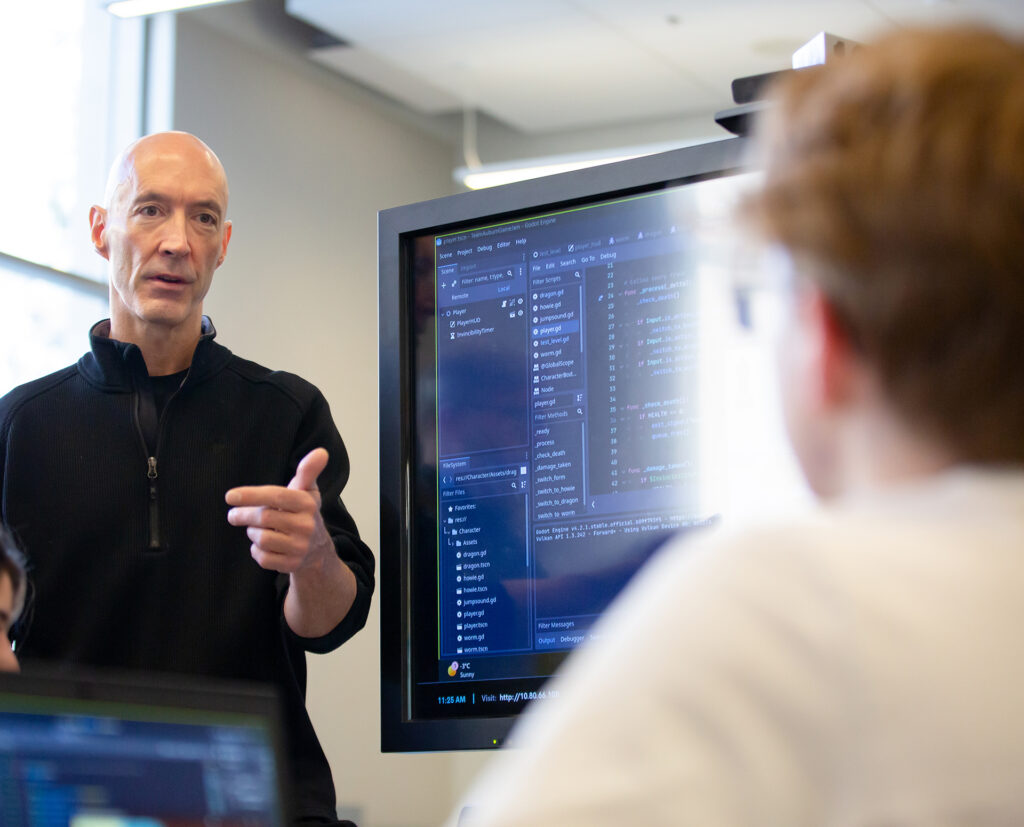
Some creatives and artists questioned the authenticity of works produced in part with an AI tool and many educators, understandably, saw tremendous challenge around this sophisticated route to potentially cutting corners on essay-writing. But Finn saw opportunity for a new path to learning. He immediately built AI into his teaching plans and pitched an entire senior-level block-week course on AI and games that kicked off in January 2024. “As soon as ChatGPT happened, my next lecture to my students was, ‘Use it now! It’s the greatest thing ever!’” says Finn.
Finn has long been an enthusiast of meshing technology with creativity. His areas of focus include human/non-human interaction, experimental use of technology and models of collaboration. For many years, he has taught graduate courses in the Faculty of Science’s interdisciplinary Computational Media Design (CMD) program that blends computer science and the arts.
“I view computer research as my creative instrument,” he says. “All the work I do is related to AI. We’re fortunate at this university to be ahead of the curve in transdisciplinary study and our approach to entrepreneurialism and innovation.”
Last year, Finn assigned his students a paper “written” with the use of an AI engine (students who preferred to write the essay unassisted by AI were required to state such). He challenged the class to play and experiment with challenges such as citing a paper created by a chatbot, and asked them to pay attention to word use, grammar and — most of all — to heighten their own critical-thinking skills when reading what had been produced. “There will always be people who want to cheat with fake text,” he says. “But, for everyone else who wants to use these tools, let’s learn do it in a methodical way, and from a critical standpoint.”
Finn’s students made discoveries that, he believes, will serve to strengthen their creativity in the new world. For instance, several students in the class found that most of their papers included the word “multi-faceted” to describe creativity.
“We talked about why that random word kept appearing, and what it means — and how it’s not a word any of them would have chosen in that context,” says Finn. That and other discoveries, he says, are important lessons in “finding good, honest ways to use these tools and to critically address problems and breakthroughs with intention.”
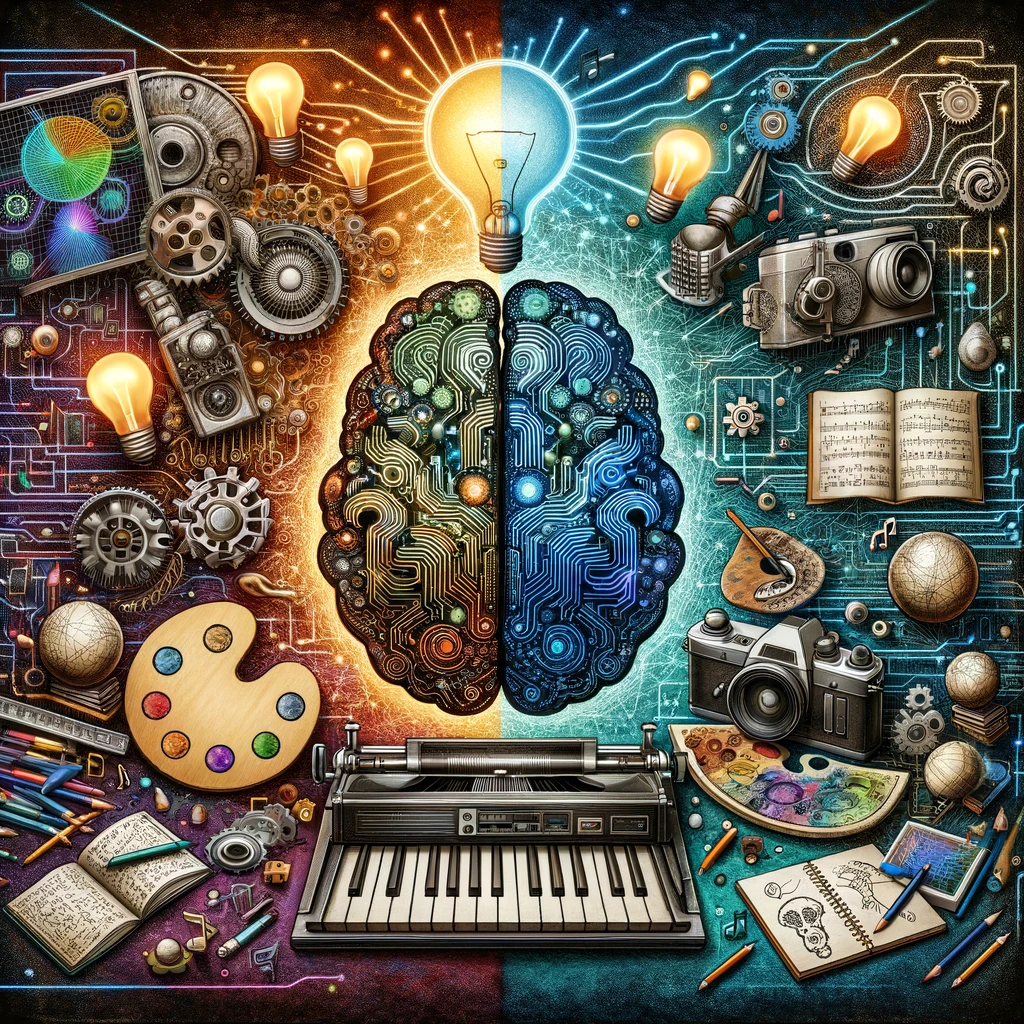
The indomitable human heart and creative spirit
From Finn’s perspective, the beauty of AI is that, by helping solve big problems faster and more effectively, it leaves humans with more opportunity to create. “We’re now poised to find cures for diseases that we once thought would take 50 or 60 years to discover or more quickly find ways to reduce the amount of plastic in the ocean or refortify the soil,” he says. “AI can effectively solve any number of huge challenges by replacing some aspects of human work.”
Finn believes these changes in how the world operates will push us to become more prolific in our generation of ideas. “The essence of being a creative human is aligning yourself with creative forces — we just need to keep dreaming bigger and reimagining what we are capable of,” he says.
By using AI to do certain tasks and “grunt work,” for instance, Finn says a film director could make 100 movies in their career, rather than just 10. Likewise, a writer “could publish 15 books in their lifetime, rather than just one.”
If you’re still feeling anxious about an AI-driven world, Finn recommends immersing yourself in nature on a regular basis: “The mountains, the ocean — all of it is always going to be more powerful than AI.” These new tools might be extraordinary but, he says, “they don’t come anywhere close to the beauty and magic of nature or of love, loss and the human heart.”
